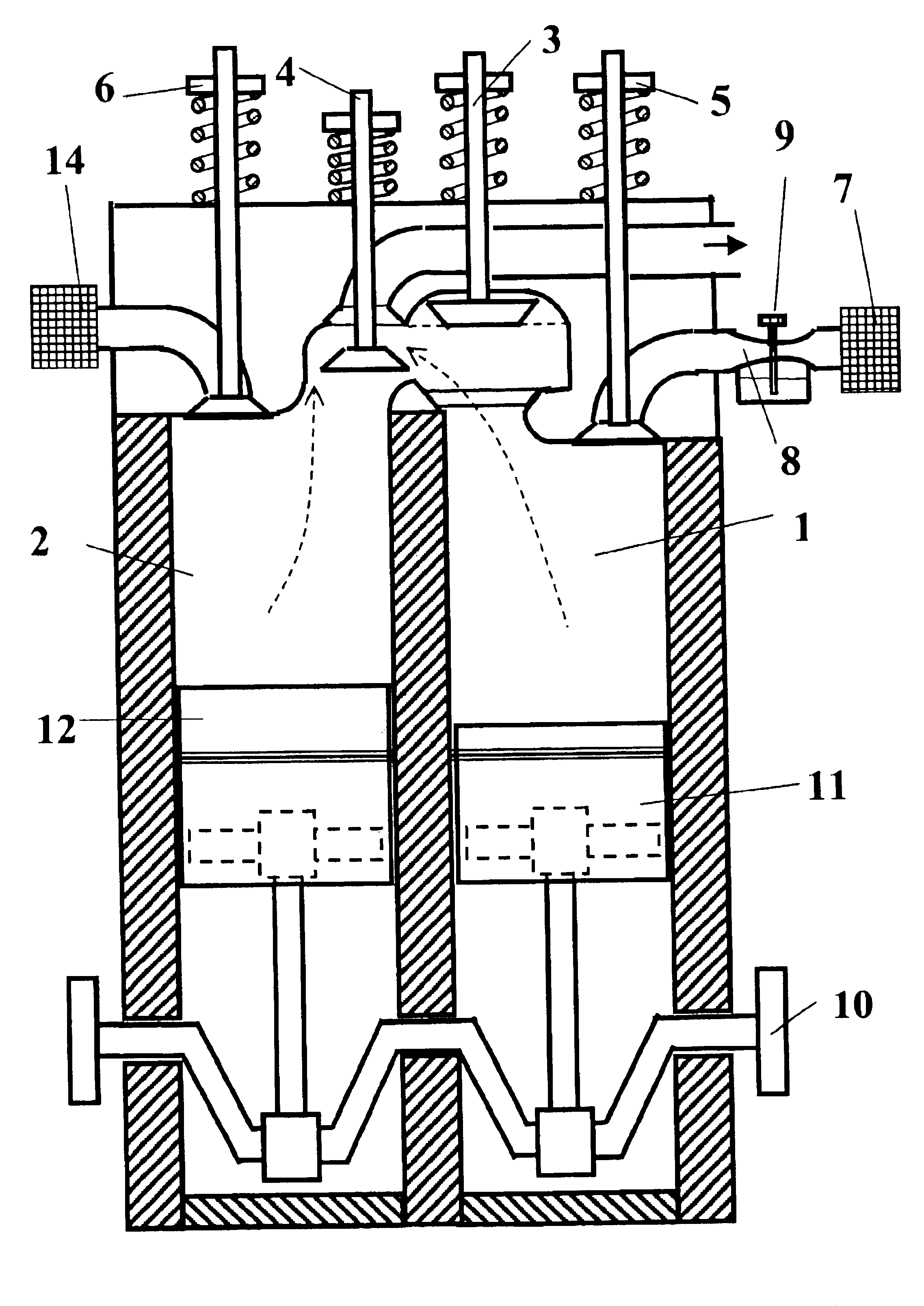Compression ignition by air injection cycle and engine
- Summary
- Abstract
- Description
- Claims
- Application Information
AI Technical Summary
Benefits of technology
Problems solved by technology
Method used
Image
Examples
Embodiment Construction
[0036]To operate a piston internal combustion engine on the Compression Ignition By Air Injection (CIBAI) cycle requires at least one pair of pistons operating in phase, with their heads near one another. One of the pistons compresses an air-fuel mixture to a pressure ratio limited by knock as in spark ignition engines. The other piston compresses air to high-pressure. When both pistons reach near Top-Dead-Center, a cylinder-connecting valve opens without increasing the combined compression volumes. Most of the hot high-pressure air transfers into the air-fuel mixture, causing sudden compression and heating followed by explosive combustion at near constant volume. This combustion pressure rise drives some of the combustion products back into the air cylinder. During the subsequent expansion stroke the cylinder-connecting valve is kept open to keep the pressure the same on both pistons. At Bottom Dead Center both cylinders will contain approximately the same amount of combustion prod...
PUM
 Login to View More
Login to View More Abstract
Description
Claims
Application Information
 Login to View More
Login to View More - R&D
- Intellectual Property
- Life Sciences
- Materials
- Tech Scout
- Unparalleled Data Quality
- Higher Quality Content
- 60% Fewer Hallucinations
Browse by: Latest US Patents, China's latest patents, Technical Efficacy Thesaurus, Application Domain, Technology Topic, Popular Technical Reports.
© 2025 PatSnap. All rights reserved.Legal|Privacy policy|Modern Slavery Act Transparency Statement|Sitemap|About US| Contact US: help@patsnap.com



